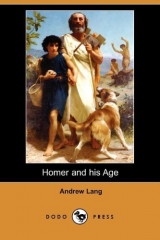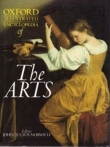
Текст книги "Homer and His Age"
Автор книги: Andrew Lang
Жанры:
История
,сообщить о нарушении
Текущая страница: 7 (всего у книги 18 страниц) [доступный отрывок для чтения: 7 страниц]
But what is the approximate date of the various expansions of the original poem? On that point Mr. Leaf gives his opinion. The Making of the Arms of Achilles (Books XVIII., XIX. 1-39) is, with the Funeral of Patroclus (XXIII. 1-256), in the second set of expansions, and is thus two removes later than the original "kernel." {Footnote: Leaf, Iliad, vol. ii. p. xii.} Now this is the period—the Making of the Shield for Achilles is, at least, in touch with the period—of "the eminently free and naturalistic treatment which we find in the best Mycenaean work, in the dagger blades, in the siege fragment, and notably in the Vaphio cups," (which show long-haired men, not men close-cropped, as in the daggers and siege fragment). {Footnote: Leaf, Iliad, vol. ii. p, 606.} The poet of the age of the second expansions, then,' is at least in touch with the work of the shaft grave and ages. He need not be contemporary with that epoch, but "may well have had in his mind the work of artists older than himself." It is vaguely possible that he may have seen an ancient shield of the Mycenaean prime, and may be inspired by that. {Footnote: Ibid., vol. ii. pp. 606, 607.}
Moreover, and still more remarkable, the ordinary Homeric form of cremation and howe-burial is even older than the period which, if not contemporary with, is clearly reminiscent of, the art of the shaft graves. For, in the period of the first expansions (VII. 1-3 I 2), the form of burial is cremation, with a barrow or tumulus. {Footnote: Ibid., vol. ii. p. xi. and pp. 606, 607.} Thus Mr. Leaf's opinion might lead us to the conclusion that the usual Homeric form of burial occurs in a period PRIORto an age in which the poet is apparently reminiscent of the work of two early epochs—the epoch of shaft graves and that of THOLOSgraves. If this be so, cremation and urn burial in cairns may be nearly as old as the Mycenaean shaft graves, or as old as the THOLOSgraves, and they endure into the age of the latest expansions.
We must not press, however, opinions founded on the apparent technical resemblance of the free style and coloured metal work on the shield of Achilles, to the coloured metal work and free design on the daggers of the Mycenaean shaft graves. It is enough for us to note that the passages concerning burial, from the "kernel" itself, and also from the earliest to the latest expansions, are all perfectly harmonious, and of a single age—unless we are convinced by Helbig's objections. That age must have been brief, indeed, for, before it arrives, the period of tholosgraves, as at Vaphio, must expire, on one hand, while the blending of cremation with inhumation, in the Dipylon age, must have been evolved after the cremation age passed, on the other. That brief intervening age, however, was the age of the ILIADand Odyssey. This conclusion can only be avoided by alleging that late poets, however recent and revolutionary, carefully copied the oldest epic model of burial, while they innovated in almost every other point, so we are told. We can go no further till we find an unrifled cairn burial answering to Homeric descriptions. We have, indeed, in Thessaly, "a large tumulus which contained a silver urn with burned remains." But the accompanying pottery dated it in the second century B.C. {Footnote: Ridgeway, Early Age Of Greece, vol. i. p. 491; Journal of Hellenic Studies, vol. xx. pp. 20-25.} It is possible enough that all tumuli of the Homeric period have been robbed by grave plunderers in the course of the ages, as the Vikings are said to have robbed the cairns of Sutherlandshire, in which they were not likely to find a rich reward for their labours. A conspicuous howe invites robbery—the heroes of the Saga, like Grettir, occasionally rob a howe—and the fact is unlucky for the Homeric archaeologist.
We have now tried to show that, as regards (1) to the absence from Homer of new religious and ritual ideas, or of very old ideas revived in Ionia, (2) as concerns the clear conception of a loose form of feudalism, with an Over-Lord, and (3) in the matter of burial, the Iliadand Odyssey are self-consistent, and bear the impress of a single and peculiar moment of culture.
The fact, if accepted, is incompatible with the theory that the poets both introduced the peculiar conditions of their own later ages and also, on other occasions, consciously and consistently "archaised." Not only is such archaising inconsistent with the art of an uncritical age, but a careful archaiser, with all the resources of Alexandrian criticism at his command, could not archaise successfully. We refer to Quintus Smyrnaeus, author of the Post Homerica, in fourteen books. Quintus does his best; but we never observe in him that naпfdelight in describing weapons and works of art, and details of law and custom which are so conspicuous in Homer and in other early poets. He does give us Penthesilea's great sword, with a hilt of ivory and silver; but of what metal was the blade? We are not told, and the reader of Quintus will observe that, though he knows {Greek: chalkos}, bronze, as a synonym for weapons, he scarcely ever, if ever, says that a sword or spear or arrow-head was of bronze—a point on which Homer constantly insists. When he names the military metal Quintus usually speaks of iron. He has no interest in the constitutional and legal sides of heroic life, so attractive to Homer.
Yet Quintus consciously archaises, in a critical age, with Homer as his model. Any one who believes that in an uncritical age rhapsodists archaised, with such success as the presumed late poets of the ILIADmust have done, may try his hand in our critical age, at a ballad in the style of the Border ballads. If he succeeds in producing nothing that will at once mark his work as modern, he will be more successful than any poet who has made the experiment, and more successful than the most ingenious modern forgers of gems, jewels, and terra-cottas. They seldom deceive experts, and, when they do, other experts detect the deceit.
CHAPTER VII
HOMERIC ARMOUR
Tested by their ideas, their picture of political society, and their descriptions of burial rites, the presumed authors of the alleged expansions of the Iliadall lived in one and the same period of culture. But, according to the prevalent critical theory, we read in the Iliadnot only large "expansions" of many dates, but also briefer interpolations inserted by the strolling reciters or rhapsodists. "Until the final literary redaction had come," says Mr. Leaf—that is about 540 B.C.—"we cannot feel sure that any details, even of the oldest work, were secure from the touch of the latest poet." {Footnote: Leaf, Iliad, vol. ii. p. ix.}
Here we are far from Mr. Leaf's own opinion that "the whole scenery of the poems, the details of armour, palaces, dress, decoration ... had become stereotyped, and formed a foundation which the Epic poet dared not intentionally sap...." {Footnote: Ibid., vol. i. p. xv.} We now find {Footnote: Ibid., vol. ii. p. ix.} that "the latest poet" saps as much as he pleases down to the middle of the sixth century B.C. Moreover, in the middle of the sixth century B.C., the supposed editor employed by Hsistratus made "constant additions of transitional passages," and added many speeches by Nestor, an ancestor of Pisistratus.
Did these very late interlopers, down to the sixth century, introduce modern details into the picture of life? did they blur the unuscolor? We hope to prove that, if they did so at all, it was but slightly. That the poems, however, with a Mycenaean or sub-Mycenaean basis of actual custom and usage, contain numerous contaminations from the usage of centuries as late as the seventh, is the view of Mr. Leaf, and Reichel and his followers. {Footnote: Homerische Waffen. Von Wolfgang Reichel. Wien, 1901.}
Reichel's hypothesis is that the heroes of the original poet had no defensive armour except the great Mycenaean shields; that the ponderous shield made the use of chariots imperatively necessary; that, after the Mycenaean age, a small buckler and a corslet superseded the unwieldy shield; that chariots were no longer used; that, by the seventh century B.C., a warrior could not be thought of without a breastplate; and that new poets thrust corslets and greaves into songs both new and old.
How the new poets could conceive of warriors as always in chariots, whereas in practice they knew no war chariots, and yet could not conceive of them without corslets which the original poet never saw, is Reichel's secret. The new poets had in the old lays a plain example to follow. They did follow it as to chariots and shields; as to corslets and greaves they reversed it. Such is the Reichelian theory.
THE SHIELD
As regards armour, controversy is waged over the shield, corslet, and bronze greaves. In Homer the shield is of leather, plated with bronze, and of bronze is the corslet. No shields of bronze plating and no bronze corslets have been found in Mycenaean excavations.
We have to ask, do the Homeric descriptions of shields tally with the representations of shields in works of art, discovered in the graves of Mycenae, Spata in Attica, Vaphio in Sparta, and elsewhere? If the descriptions in Homer vary from these relics, to what extent do they vary? and do the differences arise from the fact that the poet describes consistently what he sees in his own age, or are the variations caused by late rhapsodists in the Iron Age, who keep the great obsolete shields and bronze weapons, yet introduce the other military gear of their day, say 800-600 B.C.—gear unknown to the early singers?
It may be best to inquire, first, what does the poet, or what do the poets, say about shields? and, next, to examine the evidence of representations of shields in Mycenaean art; always remembering that the poet does not pretend to live, and beyond all doubt does not live, in the Mycenaean prime, and that the testimony of the tombs is liable to be altered by fresh discoveries.
In Iliad, II. 388, the shield ( aspis) is spoken of as "covering a man about" ({Greek: amphibrotae}), while, in the heat of battle, the baldric ( telamon), or belt of the shield, "shall be wet with sweat." The shield, then, is not an Ionian buckler worn on the left arm, but is suspended by a belt, and covers a man, or most of him, just as Mycenaean shields are suspended by belts shown in works of art, and cover the body and legs. This (II. 388) is a general description applying to the shields of all men who fight from chariots. Their great shield answers to the great mediaeval shield of the knights of the twelfth century, the "double targe," worn suspended from the neck by a belt. Such a shield covers a mounted knight's body from mouth to stirrup in an ivory chessman of the eleventh to twelfth century A.D., {Footnote: Catalogue of Scottish National Antiquities, p. 375.} so also in the Bayeux tapestry, {Footnote: Gautier, Chanson de Roland. Seventh edition, pp. 393, 394.} and on seals. Dismounted men have the same shield (p. 132).
The shield of Menelaus (III. 348) is "equal in all directions," which we might conceive to mean, mathematically "circular," as the words do mean that. A shield is said to have "circles," and a spear which grazes a shield—a shield which was {Greek: panton eesae}, "every way equal"—rends both circles, the outer circle of bronze, and the inner circle of leather ( Iliad, XX. 273-281). But the passage is not unjustly believed to be late; and we cannot rely on it as proof that Homer knew circular shields among others. The epithet {Greek: eukuklykos}, "of good circle," is commonly given to the shields, but does not mean that the shield was circular, we are told, but merely that it was "made of circular plates." {Footnote: Leaf, Iliad, vol. i. p. 573.} As for the shield of Menelaus, and other shields described in the same words, "every way equal," the epithet is not now allowed to mean "circular." Mr. Leaf, annotating Iliad, I. 306, says that this sense is "intolerably mathematical and prosaic," and translates {Greek: panton eesae}as "well balanced on every side." Helbig renders the epithets in the natural sense, as "circular." {Footnote: Helbig, Homerische Epos, p. 315; cf., on the other hand, p. 317, Note I.}
To the rendering "circular" it is objected that a circular shield of, say, four feet and a half in diameter, would be intolerably heavy and superfluously wide, while the shields represented in Mycenaean art are not circles, but rather resemble a figure of eight, in some cases, or a section of a cylinder, in others, or, again, a door (Fig. 5, p. 130).
What Homer really meant by such epithets as "equal every way," "very circular," "of a good circle," cannot be ascertained, since Homeric epithets of the shield, which were previously rendered "circular," "of good circle," and so on, are now translated in quite other senses, in order that Homeric descriptions may be made to tally with Mycenaean representations of shields, which are never circular as represented in works of art. In this position of affairs we are unable to determine the shape, or shapes, of the shields known to Homer.
A scholar's rendering of Homer's epithets applied to the shield is obliged to vary with the variations of his theory about the shield. Thus, in 1883, Mr. Leaf wrote, "The poet often calls the shield by names which seem to imply that it was round, and yet indicates that it was large enough to cover the whole body of a man.... In descriptions the round shape is always implied." The words which indicated that the shield (or one shield) "really looked like a tower, and really reached from neck to ankles" (in two or three cases), were "received by the poet from the earlier Achaean lays." "But to Homer the warriors appeared as using the later small round shield. His belief in the heroic strength of the men of old time made it quite natural to speak of them as bearing a shield which at once combined the later circular shape and the old heroic expanse...." {Footnote: Journal of Hellenic Studies, iv. pp.283-285.}
Here the Homeric words which naturally mean "circular" or "round" are accepted as meaning "round" or "circular." Homer, it is supposed, in practice only knows the round shields of the later age, 700 B.C., so he calls shields "round," but, obedient to tradition, he conceives of them as very large.
But, after the appearance of Reichel's speculations, the Homeric words for "round" and "circular" have been explained as meaning something else, and Mr. Leaf, in place of maintaining that Homer knew no shields but round shields, now writes (1900), "The small circular shield of later times...is equally unknown to Homer, with a very few curious exceptions," which Reichel discovered—erroneously, as we shall later try to show. {Footnote: Leaf, Iliad, vol. i. p. 575.}
Thus does science fluctuate! Now Homer knows in practice none but light round bucklers, dating from about 700 B.C.; again, he does not know them at all, though they were habitually used in the period at which the later parts of his Epic were composed. We shall have to ask, how did small round bucklers come to be unknown to late poets who saw them constantly?
Some scholars, then, believe that the old original poet always described Mycenaean shields, which are of various shapes, but never circular in Mycenaean art. If there are any circular shields in the poems, these, they say, must have been introduced by poets accustomed, in a much later age, to seeing circular bucklers. Therefore Homeric words, hitherto understood as meaning "circular," must now mean something else—even if the reasoning seems circular.
Other scholars believe that the poet in real life saw various types of shields in use, and that some of them were survivals of the Mycenaean shields, semi-cylindrical, or shaped like figures of 8, or like a door; others were circular; and these scholars presume that Homer meant "circular" when he said "circular." Neither school will convert the other, and we cannot decide between them. We do not pretend to be certain as to whether the original poet saw shields of various types, including the round shape, in use, though that is possible, or whether he saw only the Mycenaean types.
As regards size, Homer certainly describes, in several cases, shields very much larger than most which we know for certain to have been common after, say, 700 B.C. He speaks of shields reaching from neck to ankles, and "covering the body of a man about." Whether he was also familiar with smaller shields of various types is uncertain; he does not explicitly say that any small bucklers were used by the chiefs, nor does he explicitly say that all shields were of the largest type. It is possible that at the time when the Epic was composed various types of shield were being tried, while the vast ancient shield was far from obsolete.
To return to the sizeof the shield. In a feigned tale of Odysseus (Odyssey, XIV. 474-477), men in a wintry ambush place their shields over their shoulders, as they lie on the ground, to be a protection against snow. But any sort of shield, large or small, would protect the shoulders of men in a recumbent position. Quite a large shield may seem to be indicated in Iliad, XIII. 400-405, where Idomeneus curls up his whole person behind his shield; he was "hidden" by it. Yet, as any one can see by experiment, a man who crouched low would be protected entirely by a Highland targe of less than thirty inches in diameter, so nothing about the size of the shield is ascertained in this passage. On a black-figured vase in the British Museum (B, 325) the entire body of a crouching warrior is defended by a large Boeotian buckler, oval, and with йchancruresin the sides. The same remark applies to Z&ad{sic}, XXII. 273-275. Hector watches the spear of Achilles as it flies; he crouches, and the spear flies over him. Robert takes this as an "old Mycenaean" dodge—to duck down to the bottom of the shield. {Footnote: Studien zur Ilias, p. 21.} The avoidance by ducking can be managed with no shield, or with a common Highland targe, which would cover a man in a crouching posture, as when Glenbucket's targe was peppered by bullets at Clifton (746), and Cluny shouted "What the devil is this?" the assailants firing unexpectedly from a ditch. A few moments of experiment, we repeat, prove that a round targe can protect a man in Hector's attitude, and that the Homeric texts here throw no light on the sizeof the shield.
The shield of Hector was of black bull's-hide, and as large and long as any represented in Mycenaean art, so that, as he walked, the rim knocked against his neck and ankles. The shape is not mentioned. Despite its size, he walkedunder it from the plain and field of battle into Troy ( Iliad, VI. 116-118). This must be remembered, as Reichel {Footnote: Reichel, 38, 39. Father Browne ( Handbook, p. 230) writes, "In Odyssey, XIV 475, Odysseus says he slept within the shield." He says "under arms" ( Odyssey, XIV. 474, but cf. XIV. 479).} maintains that a man could not walk under shield, or only for a short way; wherefore the war chariot was invented, he says, to carry the fighting man from point to point (Leaf, Iliad, vol. i. p. 573). Mr. Leaf elaborates these points: "Why did not the Homeric heroes ride? Because no man could carry such a shield on horseback." {Footnote: Iliad, vol. i. p. 573.} We reply that men could and did carry such shields on horseback, as we know on the evidence of works of art and poetry of the eleventh to twelfth centuries A.D. Mr. Ridgeway has explained the introduction of chariots as the result of horses too small to carry a heavy and heavily-armed man as a cavalier.
The shield ({Greek: aspis}), we are told by followers of Reichel, was only worn by princes who could afford to keep chariots, charioteers, and squires of the body to arm and disarm them. But this can scarcely be true, for all the comrades of Diomede had the shield ({Greek: aspis}, Iliad, X. 152), and the whole host of Pandarus of Troy, a noted bowman, were shield-bearers ({Greek: aspistaon laon}, Iliad, IV. 90), and some of them held their shields ({Greek: sakae}) in front of Pandarus when he took a treacherous shot at Menelaus (IV. 113). The whole host could not have chariots and squires, we may presume, so the chariot was not indispensable to the йcuyeror shield-bearing man.
The objections to this conjecture of Reichel are conspicuous, as we now prove.
No Mycenaean work of art shows us a shielded man in a chariot; the men with the monstrous shields are always depicted on foot. The only modern peoples who, to our knowledge, used a leather shield of the Mycenaean size and even of a Mycenaean shape had no horses and chariots, as we shall show. The ancient Eastern peoples, such as the Khita and Egyptians, who fought from chariots, carried smallshields of various forms, as in the well-known picture of a battle between the Khita, armed with spears, and the bowmen of Rameses II, who kill horse and man with arrows from their chariots, and carry no spears; while the Khita, who have no bows, merely spears, are shot down as they advance. {Footnote: Maspero, Hist. Ancienne, ii. p. 225.}. Egyptians and Khita, who fight from chariots, use smallbucklers, whence it follows that war chariots were not invented, or, at least, were not retained in use, for the purpose of giving mobility to men wearing gigantic shields, under which they could not hurry from point to point. War chariots did not cease to be used in Egypt, when men used small shields.
Moreover, Homeric warriors can make marches under shield, while there is no mention of chariots to carry them to the point where they are to lie in ambush (Odyssey, XIV. 470-510). If the shield was so heavy as to render a chariot necessary, would Homer make Hector trudge a considerable distance under shield, while Achilles, under shield, sprints thrice round the whole circumference of Troy? Helbig notices several other cases of long runs under shield. Either Reichel is wrong, when he said that the huge shield made the use of the war chariot necessary, or the poet is "late"; he is a man who never saw a large shield like Hector's, and, though he speaks of such shields, he thinks that men could walk and run under them. When men did walk or run under shield, or ride, if they ever rode, they would hang it over the left side, like the lion-hunters on the famous inlaid dagger of Mycenae, {Footnote: For the chariots, cf. Reichel, Homerische Waffen, 120 ff. Wien, 1901.} or the warrior on the chessman referred to above (p. 111).
Aias, again, the big, brave, stupid Porthos of the Iliad, has the largest shield of all, "like a tower" (this shield cannot have been circular), and is recognised by his shield. But he never enters a chariot, and, like Odysseus, has none of his own, because both men come from rugged islands, unfit for chariot driving. Odysseus has plenty of shields in his house in Ithaca, as we learn from the account of the battle with the Wooers in the Odyssey;yet, in Ithaca, as at Troy, he kept no chariot. Here, then, we have nations who fight from chariots, yet use small shields, and heroes who wear enormous shields, yet never own a chariot. Clearly, the great shield cannot have been the cause of the use of the war chariot, as in the theory of Reichel.
Aias and his shield we meet in Iliad, VII. 206-220. "He clothed himself upon his flesh in allhis armour" ({Greek: teuchea}), to quote Mr. Leaf's translation; but the poet only describeshis shield: his "towerlike shield of bronze, with sevenfold ox-hide, that Tychius wrought him cunningly; Tychius, the best of curriers, that had his home in Hyle, who made for him his glancing shield of sevenfold hides of stalwart bulls, and overlaid the seven with bronze."
The shield known to Homer then is, in this case, so tall as to resemble a tower, and has bronze plating over bull's hide. By tradition from an age of leather shields the Currier is still the shield-maker, though now the shield has metal plating. It is fairly clear that Greek tradition regarded the shield of Aias as of the kind which covered the body from chin to ankles, and resembled a bellying sail, or an umbrella unfurled, and drawn in at the sides in the middle, so as to offer the semblance of two bellies, or of one, pinched in at or near the centre. This is probable, because the coins of Salamis, where Aias was worshipped as a local hero of great influence, display this shield as the badge of the AEginetan dynasty, claiming descent from Aias. The shield is bossed, or bellied out, with two half-moons cut in the centre, representing the waist, or pinched—in part, of the ancient Mycenaean shield; the same device occurs on a Mycenaean ring from AEgina in the British Museum. {Footnote: Evans, Journal of Hellenic Studies, xiii. 213-216.}
In a duel with Aias the spear of Hector pierced the bronze and six layers of hide on his shield, but stuck in the seventh. The spear of Aias went through the circular (or "every way balanced") huge shield of Hector, and through his corslet and chiton, but Hector had doubled himself up laterally ({Greek: eklinthae}, VII. 254), and was not wounded. The next stroke of Aias pierced his shield, and wounded his neck; Hector replied with a boulder that lighted on the centre of the shield of Aias, "on the boss," whether that means a mere ornament or knob, or whether it was the genuine boss—which is disputed. Aias broke in the shield of Hector with another stone; and the gentle and joyous passage of arms was stopped.
The shield of Agamemnon was of the kind that "cover all the body of a man," and was "every way equal," or "circular." It was plated with twelve circles of bronze, and had twenty {Greek: omphaloi}, or ornamental knobs of tin, and the centre was of black cyanus (XI. 31-34). There was also a head of the Gorgon, with Fear and Panic. The description is not intelligible, and I do not discuss it.
A man could be stabbed in the middle of the belly, "under his shield" (XI. 424-425), not an easy thing to do, if shields covered the whole body to the feet; but, when a hero was leaping from his chariot (as in this case), no doubt a spear could be pushed up under the shield. The ancient Irish romances tell of a gae bulg, a spear held in the warrior's toes, and jerked up under the shield of his enemy! Shields could be held up on high, in an attack on a wall garrisoned by archers (XII. 139), the great Norman shield, also, could be thus lifted.
The Locrians, light armed infantry, had no shields, nor bronze helmets, nor spears, but slings and bows (XIII. 714). Mr. Leaf suspects that this is a piece of "false archaism," but we do not think that early poets in an uncritical age are ever archaeologists, good or bad. The poet is aware that some men have larger, some smaller shields, just as some have longer and some shorter spears (XIV. 370-377); but this does not prove that the shields were of different types. A tall man might inherit the shield of a short father, or versa.
A man in turning to fly might trip on the rim of his shield, which proves how large it was: "it reached to his feet." This accident of tripping occurred to Periphetes of Mycenae, but it might have happened to Hector, whose shield reached from neck to ankles. {Footnote: Iliad, XV. 645-646.}
Achilles must have been a large man, for he knew nobody whose armour would fit him when he lost his own (though his armour fitted Patroclus), he could, however, make shift with the tower-like shield of Aias, he said.
{Illustration 1: "THE VASE OF ARISTONOTHOS"}
The evidence of the Iliad, then, is mainly to the effect that the heroes carried huge shields, suspended by belts, covering the body and legs. If Homer means, by the epithets already cited, "of good circle" and "every way equal," that some shields of these vast dimensions were circular, we have one example in early Greek art which corroborates his description. This is "the vase of Aristonothos," signed by that painter, and supposed to be of the seventh century (Fig. 1). On one side, the companions of Odysseus are boring out the eye of the Cyclops; on the other, a galley is being rowed to the attack of a ship. On the raised deck of the galley stand three warriors, helmeted and bearing spears. The artist has represented their shields as covering their right sides, probably for the purpose of showing their devices or blazons. Theirshields are small round bucklers. On the ship are three warriors whose shields, though circular, cover THE BODY from CHIN TO ANKLES, as in Homer. One shield bears a bull's head; the next has three crosses; the third blazon is a crab. {Footnote: Mon. dell. Inst., is. pl. 4.}
Such personal armorial bearings are never mentioned by Homer. It is not usually safe to argue, from his silence, that he is ignorant of anything. He never mentions seals or signet rings, yet they cannot but have been familiar to his time. Odysseus does not seal the chest with the Phaeacian presents; he ties it up with a cunning knot; there are no rings named among the things wrought by Hephaestus, nor among the offerings of the Wooers of Penelope. {Footnote: Helbig citing Odyssey, VIII. 445-448; Iliad, XVIII. 401; Odyssey, xviii. 292-301.}
But, if we are to admit that Homer knew not rings and seals, which lasted to the latest Mycenaean times, through the Dipylon age, to the very late AEginetan treasure (800 B.C.) in the British Museum, and appear again in the earliest dawn of the classical age and in a Cyclic poem, it is plain that all the expansionists lived in one, and that a most peculiar ringlessage. This view suits our argument to a wish, but it is not credible that rings and seals and engraved stones, so very common in Mycenaean and later times, should have vanished wholly in the Homeric time. The poet never mentions them, just as Shakespeare never mentions a thing so familiar to him as tobacco. How often are finger rings mentioned in the whole mass of Attic tragic poetry? We remember no example, and instances are certainly rare: Liddell and Scott give none. Yet the tragedians were, of course, familiar with rings and seals.








